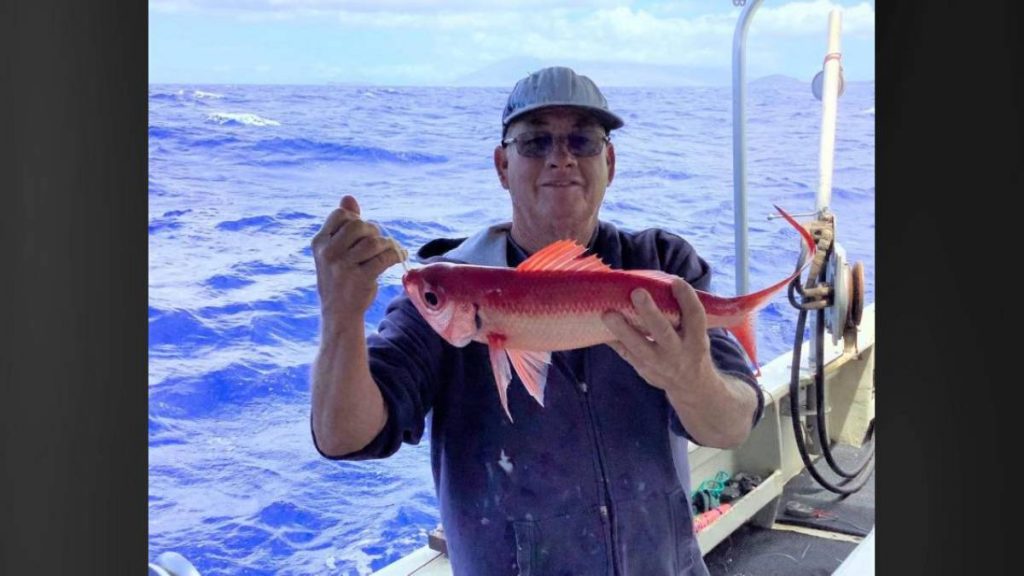Local fishers join scientists for 2023 Hawaiʻi Bottomfish Survey

The annual Bottomfish Fishery-Independent Survey in Hawai‘i – which began Aug. 1 and runs through Nov. 30 – is going strong.
The survey highlights collaboration between the NOAA Pacific Islands Fisheries Science Center and local fishers, who work together to gather data on Hawai‘i bottomfish – an important cultural and commercial resource.
The survey targets the “Deep 7,” seven of the most sought-after and important deep-water bottomfishes in Hawai‘i. The group is made up of six snappers and one grouper that typically live at depths of 250 to 1,300 feet. The Hawai‘i Deep 7 consists of:
- Ehu (squirrelfish snapper)
- Gindai (Brigham’s snapper)
- Hapuʻupuʻu (Seale’s grouper, Hawaiian grouper)
- Kalekale (Von Siebold’s snapper)
- Lehi (silverjaw snapper
- Onaga (longtail snapper)
- ‘Ōpakapaka (pink snapper)
The ‘ōpakapaka and onaga are cherished for their texture and mild flavor. Gindai, however, rarely make it to market, as they are typically enjoyed at the kitchen table by family and friends.
The annual large-scale survey was born in 2011 but has employed its current methods since 2016. Recent stock assessments suggest the Deep 7 are neither overfished nor experiencing overfishing.
Local cooperative research fishers are contracted through Lynker Technologies and the Pacific Islands Fisheries Group to conduct the annual survey. With their help, data is collected through a combination of underwater cameras and fishing at 500 stations around the eight main Hawaiian Islands.
Fishers are deploying underwater video cameras at 125 locations this year. The collected footage will be analyzed to identify, count, and measure bottomfish. It will also help regulators to better understand and manage essential fish habitat.
The fishers are also providing 375 traditional hook-and-line fish samples and report the size and species of each fish caught. The samples are used to determine growth rates, the size at which fish reach sexual maturity and become capable of spawning, and other characteristics.






